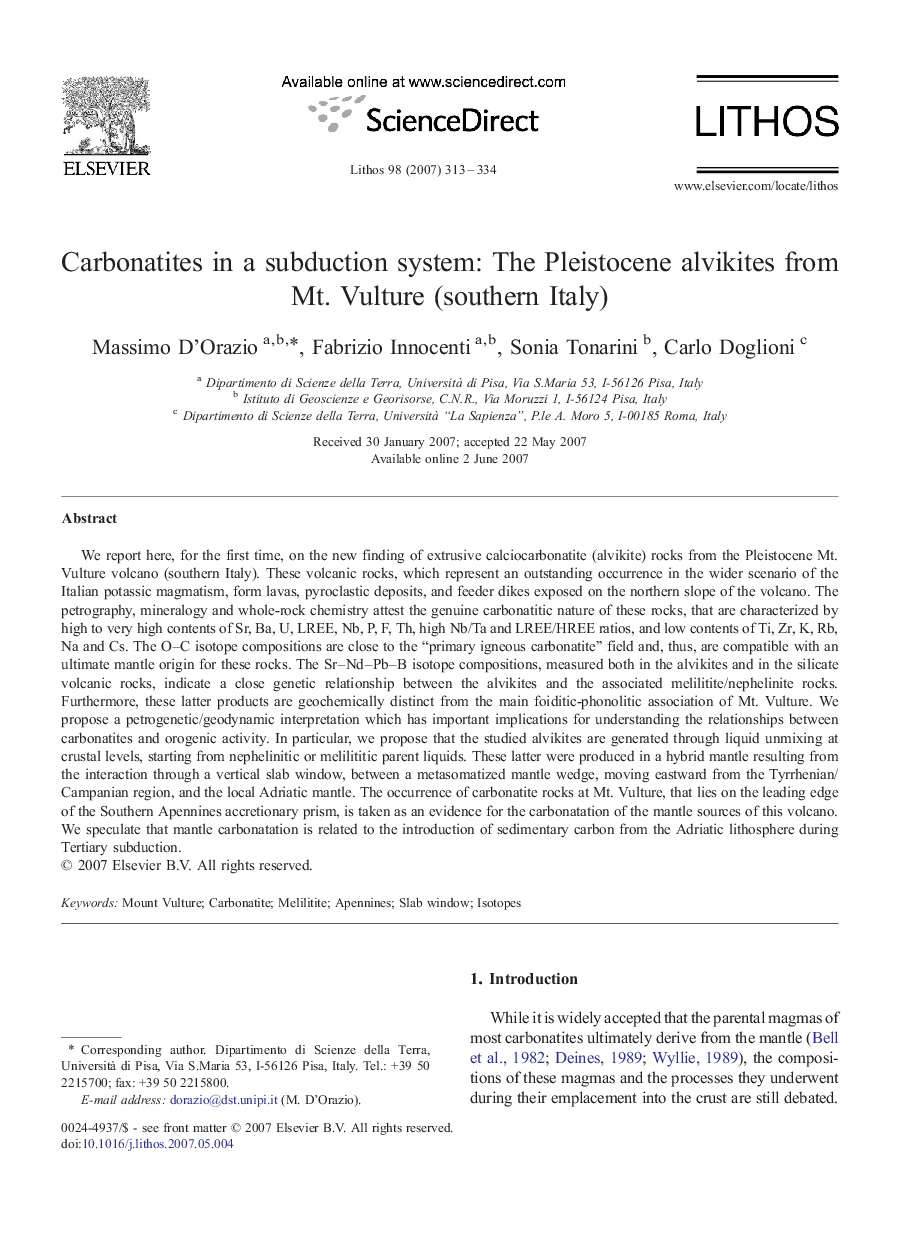| کد مقاله | کد نشریه | سال انتشار | مقاله انگلیسی | نسخه تمام متن |
|---|---|---|---|---|
| 4717782 | 1638764 | 2007 | 22 صفحه PDF | دانلود رایگان |

We report here, for the first time, on the new finding of extrusive calciocarbonatite (alvikite) rocks from the Pleistocene Mt. Vulture volcano (southern Italy). These volcanic rocks, which represent an outstanding occurrence in the wider scenario of the Italian potassic magmatism, form lavas, pyroclastic deposits, and feeder dikes exposed on the northern slope of the volcano. The petrography, mineralogy and whole-rock chemistry attest the genuine carbonatitic nature of these rocks, that are characterized by high to very high contents of Sr, Ba, U, LREE, Nb, P, F, Th, high Nb/Ta and LREE/HREE ratios, and low contents of Ti, Zr, K, Rb, Na and Cs. The O–C isotope compositions are close to the “primary igneous carbonatite” field and, thus, are compatible with an ultimate mantle origin for these rocks. The Sr–Nd–Pb–B isotope compositions, measured both in the alvikites and in the silicate volcanic rocks, indicate a close genetic relationship between the alvikites and the associated melilitite/nephelinite rocks. Furthermore, these latter products are geochemically distinct from the main foiditic-phonolitic association of Mt. Vulture. We propose a petrogenetic/geodynamic interpretation which has important implications for understanding the relationships between carbonatites and orogenic activity. In particular, we propose that the studied alvikites are generated through liquid unmixing at crustal levels, starting from nephelinitic or melilititic parent liquids. These latter were produced in a hybrid mantle resulting from the interaction through a vertical slab window, between a metasomatized mantle wedge, moving eastward from the Tyrrhenian/Campanian region, and the local Adriatic mantle. The occurrence of carbonatite rocks at Mt. Vulture, that lies on the leading edge of the Southern Apennines accretionary prism, is taken as an evidence for the carbonatation of the mantle sources of this volcano. We speculate that mantle carbonatation is related to the introduction of sedimentary carbon from the Adriatic lithosphere during Tertiary subduction.
Journal: Lithos - Volume 98, Issues 1–4, October 2007, Pages 313–334